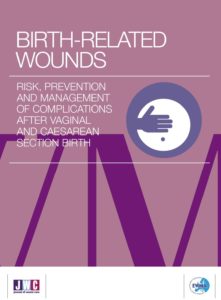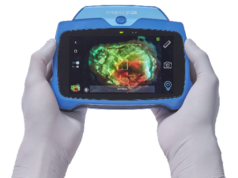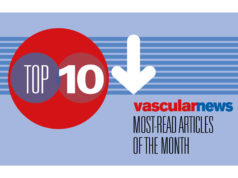 “Investment in maternity services research is essential for our understanding of the extent of wound-related complications for the postpartum mother and improved clinical pathways for wound management,” write Charmaine Childs (Sheffield Hallam University, Sheffield, UK), Kylie Sandy-Hodgetts (University of Western Australia, Perth, Australia), and colleagues in an evidence-based consensus document for healthcare workers published by the European Wound Management Association (EWMA).
“Investment in maternity services research is essential for our understanding of the extent of wound-related complications for the postpartum mother and improved clinical pathways for wound management,” write Charmaine Childs (Sheffield Hallam University, Sheffield, UK), Kylie Sandy-Hodgetts (University of Western Australia, Perth, Australia), and colleagues in an evidence-based consensus document for healthcare workers published by the European Wound Management Association (EWMA).
Childs et al relate that the document originated from a growing interest by many EWMA stakeholders, representatives from the EWMA Council and EWMA Cooperating Organisations, in the science and clinical management of birth-related wound complications. The document was written by an expert group of scientists, clinicians and midwives combining their respective and overlapping expertise in wound care, midwifery and women’s health. The clinical guidance provided in the document is based on critical analysis and synthesis of published guidelines, literature reviews, and evidence-based recommendations, as well as consensus-driven expert opinion.
Contextualising this work with an overview of wound-related complications associated with childbirth, Childs et al write: “Notwithstanding the physical toll childbirth takes on the female body, wound complications related to the birth can occur, often an unfortunate result of multiple factors related to injury to skin and deeper tissues. Birth wound complications, such as trauma to the perineum and vagina (and, in the event of birth by caesarean section, breakdown and/or infection of the surgical wound), have a considerable impact on a woman’s physical and mental wellbeing. Despite advances in our knowledge of asepsis, midwifery, obstetric surgery, and wound healing, birth-related wound complications still occur. The greater challenges faced by healthcare professionals are in the clinical management of tissue trauma and the physical and emotional wellbeing of the mother.”
The authors also state that studying wound-related complications is “especially relevant as we enter an era of antimicrobial resistance where reliance on life-saving antibiotics to prevent or treat infections may no longer be guaranteed as an effective line of defence”. In addition, they cite the economic costs of wound care as a “considerable burden” imposing on healthcare systems globally, and call for strategies to improve wound assessment.
Speaking to iWounds News, Childs relates: “I feel privileged to be an editor of this important document. My primary objective was to oversee the delivery of a comprehensive, accurate, up-to-date, and clinically relevant body of work to inform and guide practitioners in the care of women during and after the birth of a new-born. With respect to Childbirth-related perineal trauma (CRPT), there is a clear gap in the current guidelines on how to manage and care for women with this most distressing injury. I believe the patient portraits help bring to the reader a rich and valuable account of the personal experience of new mothers as they navigate the many challenges of nursing an infant whilst coping with significant emotional and physical trauma.”
The document covers an overview of: pelvic anatomy and pelvic function, risk factors for wound complications, natural microbial flora of the skin, postpartum wound infections, wound assessment, the impact of wounds on the patient, complications associated with the caesarean section, invasive infections affecting deep tissue and organ space, general treatment principles and clinical management options, and the role of the midwife. It also includes a section on “Topical issues and controversies”, which looks at the role of honey in wound care, the impact of birth-related wounds on the economy, the use of antimicrobials after childbirth, antimicrobials associated with vaginal delivery, and perioperative antibiotic use for caesarean section.
The document also contains “patient portraits”, detailing narratives of specific women’s experiences of wound-related complications during and after childbirth.
“A shared model of care with the mother at the centre of the model is required to ensure optimal wound healing outcomes,” Childs and colleagues conclude. “Future therapies for prevention and management of birth-related wound complications require extensive research and rapid translation into healthcare settings for maximum patient benefit.”
Expanding on this, Childs comments, “How women cope with a new baby after major surgery is a testament to the resilience of the 51% of our population. That a sizeable proportion of women develop a wound infection, a preventable injury, presents a challenge to all involved in the care of women after birth. Surgical site infection is one of the most common healthcare associated infections of our time and one which for many decades we have aimed to prevent and treat with antibiotics. As time goes on, we may no longer be able to rely on this medical ‘luxury’; we must be sure to preserve precious antibiotics to those who need them most.”
Reflecting on the direction of future work, Childs tells this newspaper: “One arm of research for the future, in line with many other strategies for preserving health (and life), is to find better ways to prevent both acute and chronic birth-related wound complications as well as in finding more reliable ways to assess wounds once they develop. Our hope is that this consensus document will ‘energise’ the combined communities of specialists and researchers within wound care, obstetrics, and midwifery to work together, to share experiences, and to consider new ways to tackle this significant complication of childbirth experienced by so many women.”
Key takeaways
- There are two categories of birth-related wounds. Childbirth-related perineal trauma (CRPT) occurs as a result of perineal tears and lacerations as well as skin and tissue breakdown following episiotomy. After caesarean section, the Pfannenstiel incision is a common and cosmetically acceptable incision. Both forms of tissue trauma can result in significant morbidity in women after childbirth and, as occurs in other surgical procedures, incisional wounds can lead to complications such as rupture of the wound (dehiscence) slow healing and infection.
- Infection at the surgical incision site, called a surgical site infection (SSI), is most commonly of the superficial layers. Rare, but catastrophic, infective complications occur as a result of necrotising fasciitis.
- Risk for infection after caesarean section includes patient and procedural factors linked to the physiology and health status of the woman, as well as to factors linked to the surgical procedure (including surgeon rank/expertise). Obesity is a major risk factor for surgical site infection.
- Understanding the elements contributing to risk helps to avoid, as well as mitigate, damage to tissue.
- Birth-related wounds acquire infectious agents from exogenous and endogenous sources. Maternal reservoirs of infection are skin, genital tract, and gastrointestinal tract.
- Microbial communities within the female genital tract are polymicrobial. Distinct flora are located not only within the vagina, but in the cervix, perineum, uterus, fallopian tubes, and placenta.
- The Centers for Disease Control (CDC) continues to be regarded as a “gold standard” as the global reporting definition for surgical site infection. A number of wound assessment tools (e.g. REEDA, TIMERS, DOMINATE) are available, but have not been validated for all types of birth-related wound infections. Other grading systems, for example by the World Union of Wound Healing Societies (WUWHS) Sandy SWD grading system for surgical wound dehiscence is the first to provide a clinical grading system.
- Visual inspection of perineal wounds and incisional wounds, with assessment by healthcare workers, and any signs or symptoms to suggest infection, slowed healing, or wound dehiscence should be reported promptly.
- Controversies in care and clinical management after both vaginal and caesarean section birth exist, notably in the use of antimicrobial prophylaxis. Current World Health Organisation (WHO) recommendations are to use antibiotic prophylaxis for elective and emergency caesarean section and third and fourth-degree perineal tears, but not episiotomy.
- Multiple courses of antibiotics after caesarean section increase the risk of antimicrobial resistance, especially in light of evidence of antibiotic resistant bacteria recovered from infected caesarean section wounds.
- Antibiotic stewardship now must play a key role in CRPT and caesarean section care pathways.
- There is currently limited high-quality evidence to support the use of negative pressure wound therapy (NPWT) for the prevention of SSI following caesarean section.
- Results of several systematic reviews comparing the effectiveness of wound dressings in the prevention of surgical site infection suggest no clear benefit of one type of dressing over another.
- Significant physical and emotional problems occur for many women after vaginal and caesarean section birth. There is clear need for CRPT to be placed at the forefront of care and improved education of midwives and, consequently, women.
- Complications during pregnancy increase for women with obesity. They are at a higher risk for a caesarean section, and caesarean section is an independent risk factor for wound infection. Overall, 62% of women in England are overweight or obese.
- Globally, there is an increasing trend for people to be overweight (pre-obese; BMI 25–29.9) and obese (BMI>30), including women of childbearing age. Improvement in pre- and postnatal education on avoidance of risk requires greater emphasis on assessment, screening and rational interventions.
The full text can be accessed here.












